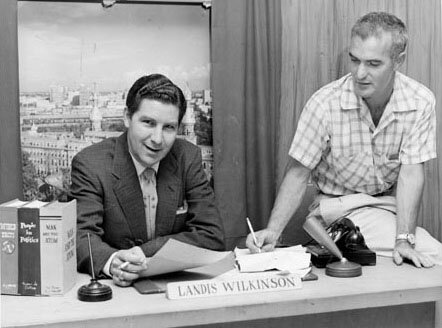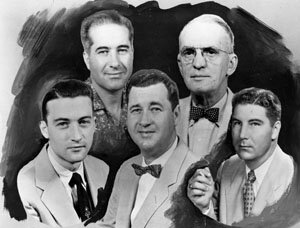WTVT News
When it comes to news, the 'Big 3' in central Florida were Hugh Smith, Andy Hardy, and Roy Leep. A lineup made in heaven, and made for heavenly ratings. They may not have been the first, but they were the best, and here's how they got there!
* * * * * * * * * * * * * * * * * * * * * * * * * * * * *
WTVT was committed to covering the news in a professional, responsible manner. Walter Cronkite, the 'most trusted man in America' and anchor of the CBS Evening News, would have felt right at home in the WTVT newsroom.
The quantity of WTVT's news operation is also worth noting. By the mid-70's, Channel 13 offered an hour of local news at 6 pm, and hour-long programs at 6 am and noon. 3 hours each weekday of local news, sports, and weather was more than twice what the competition offered.
THE EARLY YEARS
When Walter Tison's Tampa Television Company launched WTVT in 1955, there was no news department to speak of. Teletypes and facsimile machines feed a non-stop stream of headlines and stories, which were read by Channel 13's original 6pm anchor, attorney Landis Wilkinson. The 11pm report was anchored by Wayne Fariss.
Channel 13's first anchor Landis Wilkinson plans a newscast with director Bill Rennie
Wayne Fariss, an experienced radio and television broadcaster at the age of 26, was hired by Walter Tison several weeks prior to Channel 13's debut. Fariss facilitated the setup of the newsroom and was assigned to deliver the 11 p.m. news. Sports were covered by former WSUN Sports Director Guy Bagli, and a "Legislative Report" was delivered by Howard Hartley. There was no weatherman on staff until several months later when Bill Stokes presented a nightly report at 6:10. He was succeeded later by Charles Stump.
Early Montage photo of the original WTVT News, Sports, and Weather staff
(Upper Left) Guy Bagli, Howard Hartley
(Lower Left) Wayne Fariss, Charlie Stump, Landis Wilkinson
From the outset, Channel 13's news was only 15 minutes long. With a small staff, limited use of the mobile unit, and no sound-on-film interviews, Wilkinson and Fariss' newscasts were pretty simple. "All the local news was read live to silent film. We did the crime beat, spot news, anything that happened like a bad accident, fires, and city hall or county commission news," explains Fariss, who is retired now and living in South Florida. "We subscribed to a film service that came in twice a day. They provided national news which we would unspool, screen, and edit the segments we needed. We also had teletypes to the UPI and AP., which is known as 'rip and read.' Marvin Scott came towards the end of 1955, and became our main news photographer. We developed the 16mm newsfilm on racks with prongs sticking out that you put the sprocket holes on. A typical newscast would be a combination of slides, film, and live."
(To learn more about Wayne Fariss and the early days of WTVT news, CLICK HERE)

